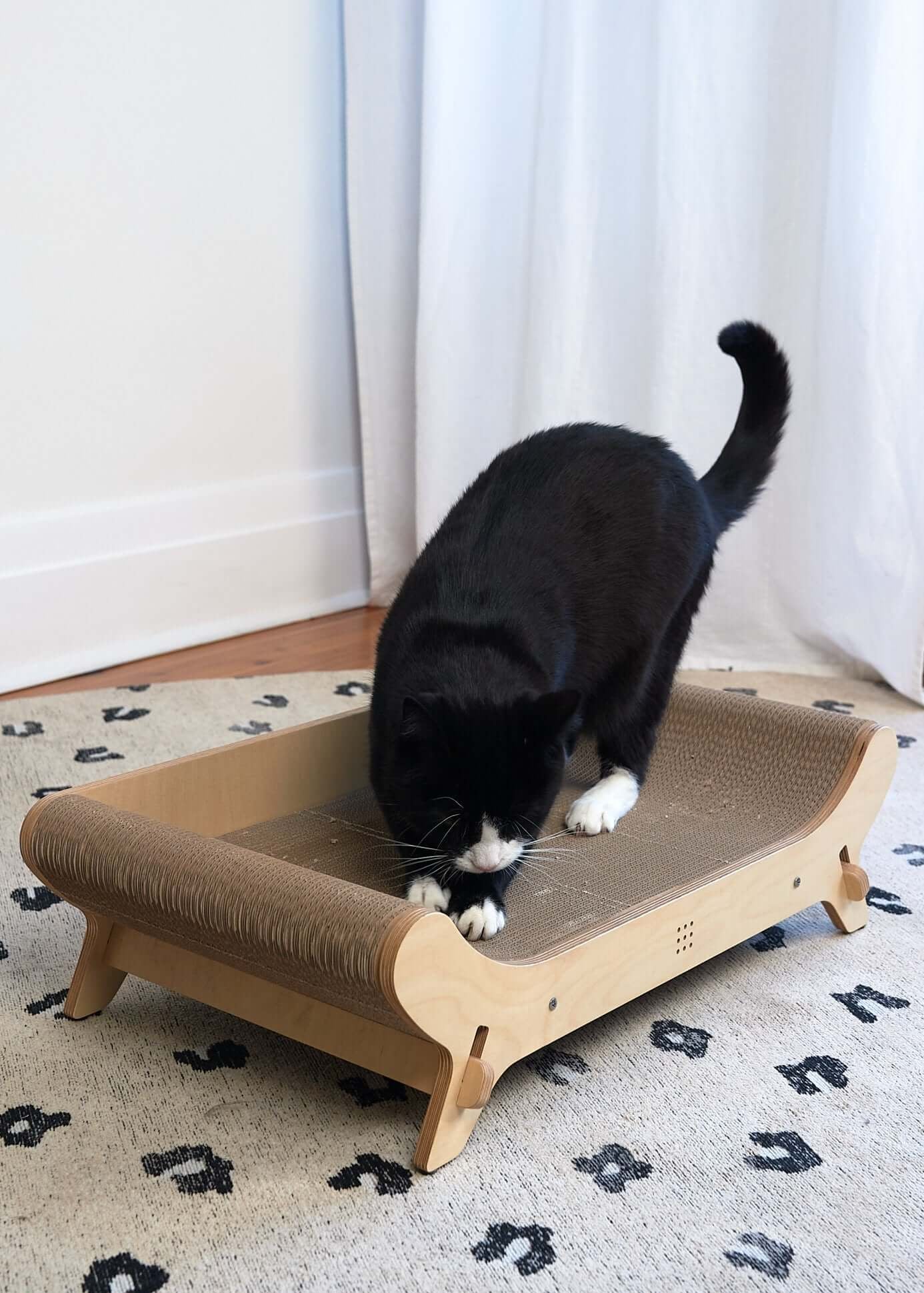If your beloved cat has been scratching up your furniture, you may be wondering how to stop this behaviour. Fortunately, there are several things you can do to prevent your cat from scratching your furniture. Here's a comprehensive guide on how you can encourage your cat to switch from scratching your furniture to more appropriate options.
1. Provide Appropriate Scratching Posts (Cat Scratching Posts)
Cats scratch for several reasons - to mark their territory, to stretch their bodies, and to keep their claws healthy. A scratching post satisfies all these needs. Cats have scent glands in their paws, which they use to mark their territory. By scratching a post, they leave both visual and scent markers.
Scratching posts should be made of a material that cats find attractive to scratch, such as sisal or carpet. They should also be sturdy and tall enough to allow your cat to stretch fully. Having several scratching posts around your home can help divert their attention away from your furniture. Placing them near their favourite scratching spots is important too.
2. Use Deterrents
To prevent cats from scratching inappropriate places like furniture, deterrents can be very effective. Materials with textures that cats find unpleasant can be used on furniture. Double-sided tape, aluminium foil, or plastic wrap are some options. The sensation of these materials under their paws can deter them from scratching.
Additionally, deterrent sprays that use odours cats find unpleasant, like certain pheromones or citrus scents, can also be used. Cats primarily use scent to determine where to scratch. Using a scent they dislike, it can effectively deter them from scratching certain areas.
3. Walk Your Cat on a Harness
Cats, similar to other pets, require both physical and mental stimulation for their overall well-being. In many cases, indoor cats may not receive as much physical activity as their outdoor counterparts. This can sometimes lead to unwanted behaviours like excessive scratching. Walking your cat on a harness is a unique and effective way to enrich their environment.
Cats are naturally curious and exploring new environments can satisfy their instinctual needs. They love the sensory experience of the outside world—the sights, sounds, and smells. It provides mental stimulation, while the physical act of walking exercises their muscles.
Before starting to walk your cat outdoors, make sure they are comfortable with the harness. Start by letting them wear it indoors and gradually acclimate them to the feeling. It's also important to keep safety in mind. Always supervise these outings and avoid areas with heavy traffic or potentially aggressive animals.
4. Redirect Your Cat’s Attention
If you notice your cat scratching, it's important to interrupt them and then redirect your cat's attention to something more appropriate. This is where understanding your cat's preferences and behaviours is crucial.
If you notice your cat starting to scratch the furniture, make a loud noise or clap your hands to distract them. This interrupts the behaviour without scaring or harming the cat. After interrupting the behaviour, immediately redirect them to their scratching post.
You could also introduce a favourite toy or initiate a play session to divert their attention away from the furniture. Consistency is the key here. The more you redirect their attention, the more likely they are to understand that furniture is not a suitable scratching surface.
5. Use Positive Reinforcement
Positive reinforcement is a powerful method of behaviour change. It involves rewarding desirable behaviour, which increases the likelihood of that behaviour being repeated.
In this case, when your cat uses their scratching post, immediately reward them with a treat, affection, or verbal praise. Cats often respond well to treats, so having some on hand near the scratching posts can be beneficial. This positive association will encourage them to continue using the post rather than your furniture.
It's important to remember that behavior changes take time and patience is key. With consistent application of these strategies, they will eventually learn to associate their scratching post with positive outcomes.
One thing to avoid at all costs is declawing your cat. Declawing a cat is a painful and unnecessary procedure that can cause physical and emotional harm to cats. It involves surgically removing the entire last joint of the cat’s toes and is a form of mutilation.
It can cause long-term physical issues such as chronic pain, lameness, and nerve damage. It can also cause behavioural issues such as biting, litter box avoidance, and aggression. Declawing does not solve behavioural issues, and there are humane alternatives to keep cats from scratching furniture.
By following this guide, you can help your cat who loves to scratch from ruining your furniture and keep it looking great. Doing these things will help your cat understand that scratching furniture is not acceptable. Most importantly, it will also save your furniture.















